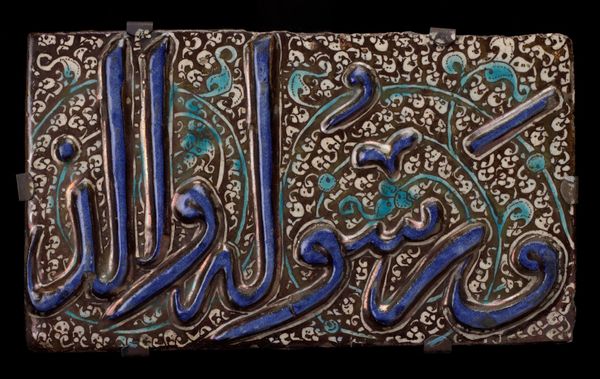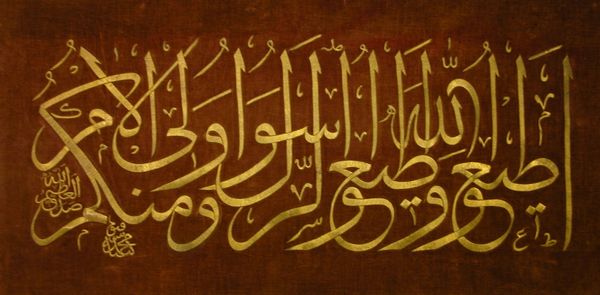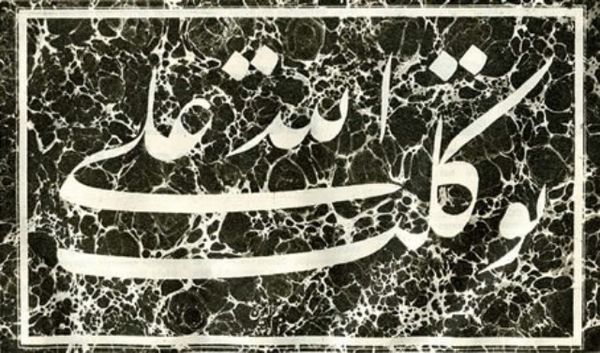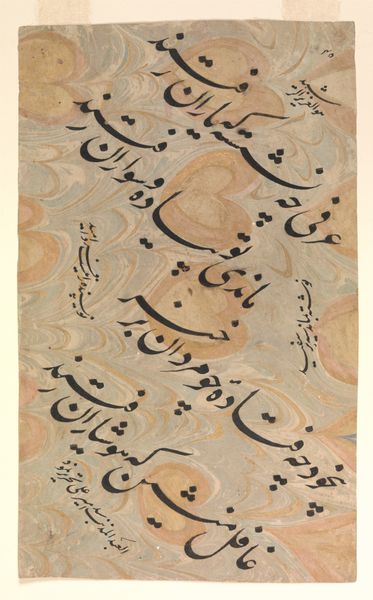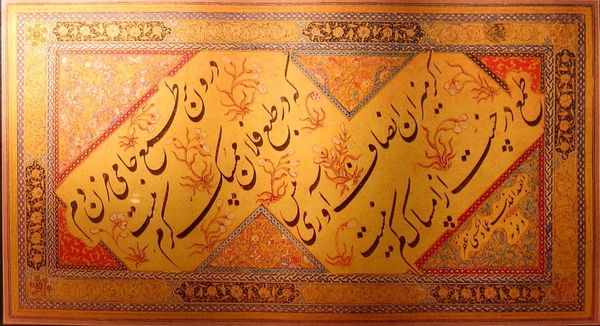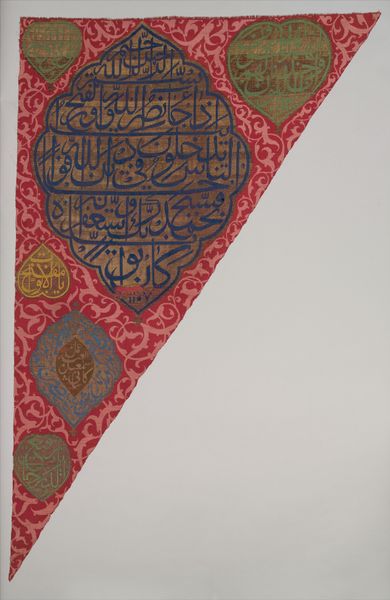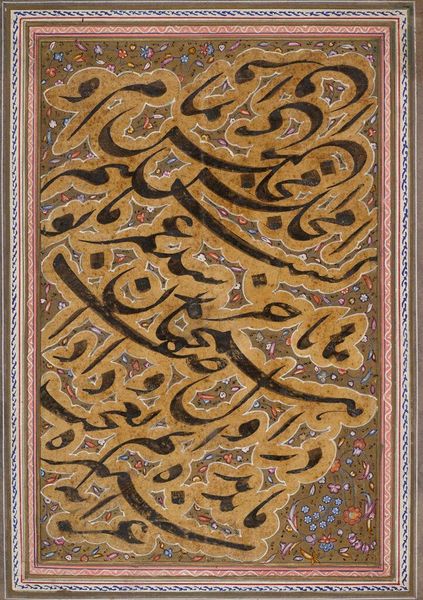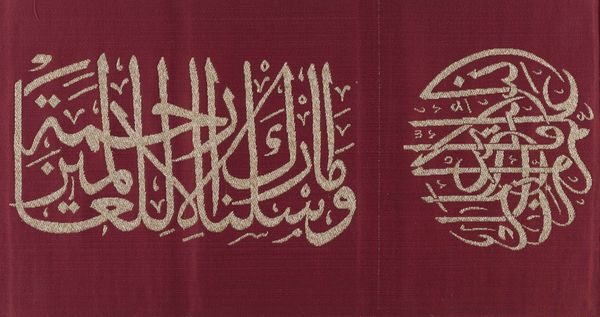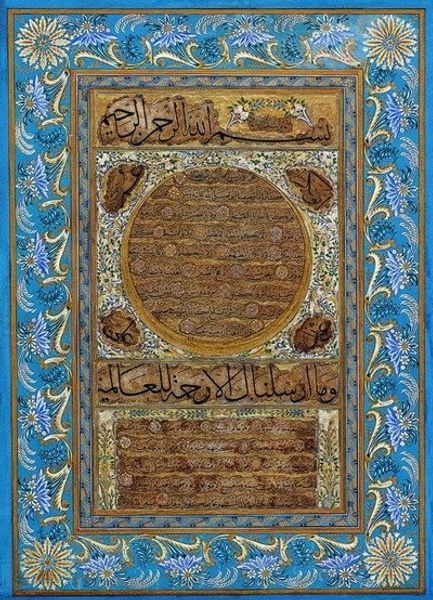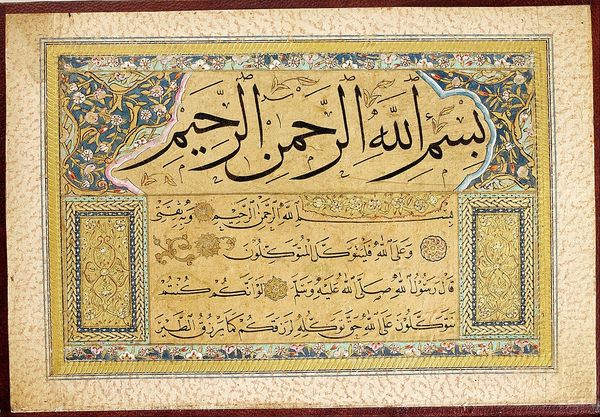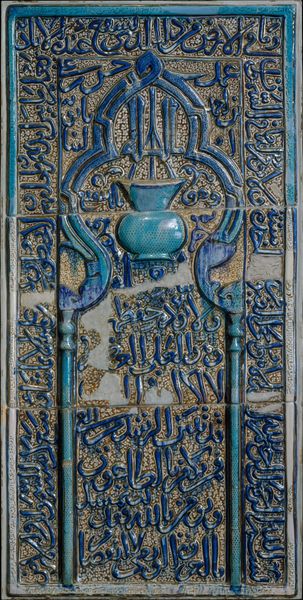
Painted tile with Qur’anic inscriptions late 13th - early 14th century
0:00
0:00
ceramic
#
ceramic
#
geometric pattern
#
geometric
#
islamic-art
#
decorative-art
#
calligraphy
Dimensions: 8 x 13 1/2 x 1 in. (20.3 x 34.29 x 2.5 cm)
Copyright: Public Domain
Curator: My goodness, look at the glaze on that tile! It's mesmerizing. Like staring into a midnight sea with the moon dancing on the waves. Editor: And those hypnotic arabesques swirling around the calligraphy suggest the perpetual presence of the divine. The Minneapolis Institute of Art houses this gorgeous example of decorative art. This painted ceramic tile featuring Qur'anic inscriptions dates back to the late 13th or early 14th century. Curator: You can just feel the artisan's dedication, can't you? It is truly astonishing when you think about the human hand producing such perfect geometrical perfection nearly 800 years ago! I imagine someone patiently placing each piece of that mosaic, whispering prayers as they worked. It makes me want to take up pottery. Editor: Right, its beauty extends beyond aesthetics. Consider its original architectural context, perhaps part of a larger decorative panel in a religious setting or an elite residence. Qur’anic inscriptions weren't merely ornamental; they were imbued with the power to sanctify space, and to communicate spiritual meaning while simultaneously embodying complex political and cultural statements about authority. It acted as a potent symbolic assertion of the ruler’s power and piety. Curator: Mmm, power. What strikes me is the intimate scale of the thing, how you have to get up close and really look to appreciate the delicate intricacy of the floral patterns playing against the geometric certainty of the letters. It's as if it invites you into a secret world. Do you think someone like Rumi would have paused over this tile, finding verses reflected back at him in the glaze? Editor: Possibly. Understanding the epigraphic design is essential because calligraphic art serves as a form of visual exegesis of the Qur'an that played a key role in mediating complex sociopolitical relationships between the rulers and the ruled, the religious establishment and the laity. Curator: Visual exegesis. I like that. It’s also incredibly tactile, I feel. One really wants to trace the raised letters and feel the coolness of the ceramic beneath your fingertips...knowing, of course, that we absolutely can't. It just looks that inviting. Editor: I agree that’s part of its enduring appeal – it's both beautiful and deeply communicative. A reminder of the intersection of faith, art, and power. Curator: A reminder of our shared humanity across the centuries, really. An artist, somewhere, putting his heart into creating something beautiful, something sacred, leaving a little piece of themselves for us to discover centuries later. Editor: Precisely, this work helps reveal ways in which art objects can play active roles in shaping collective memories.
Comments
No comments
Be the first to comment and join the conversation on the ultimate creative platform.
